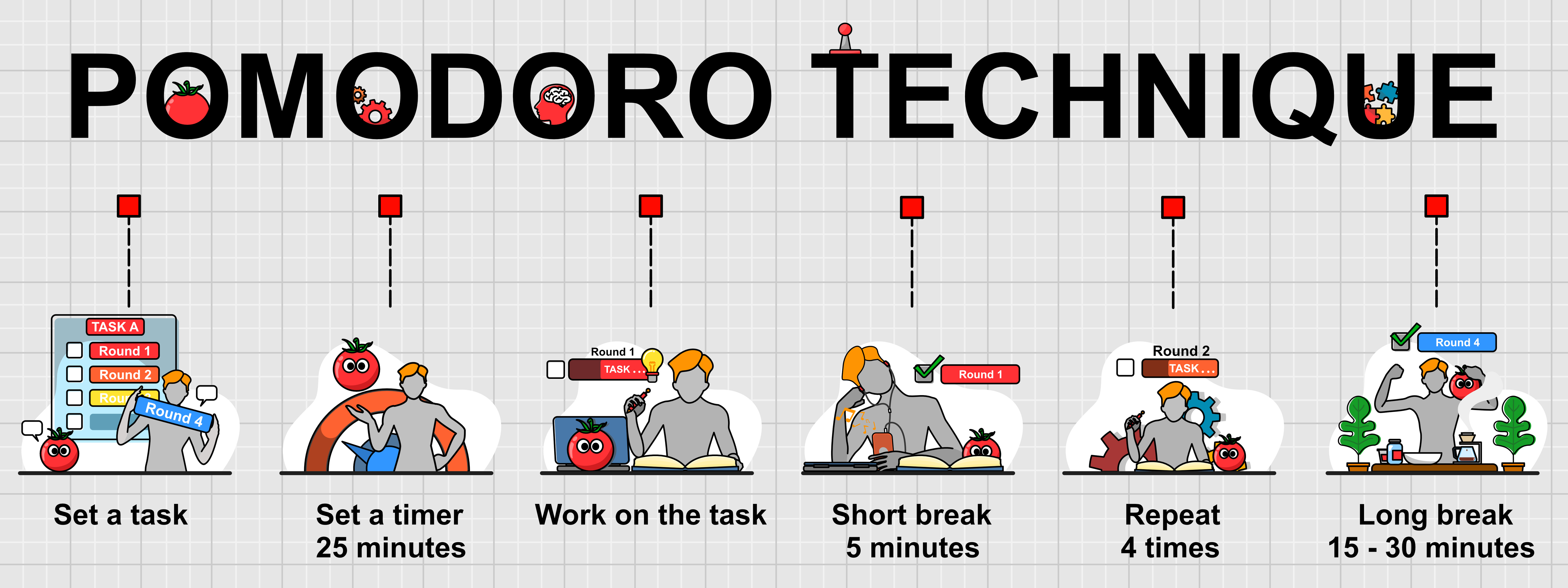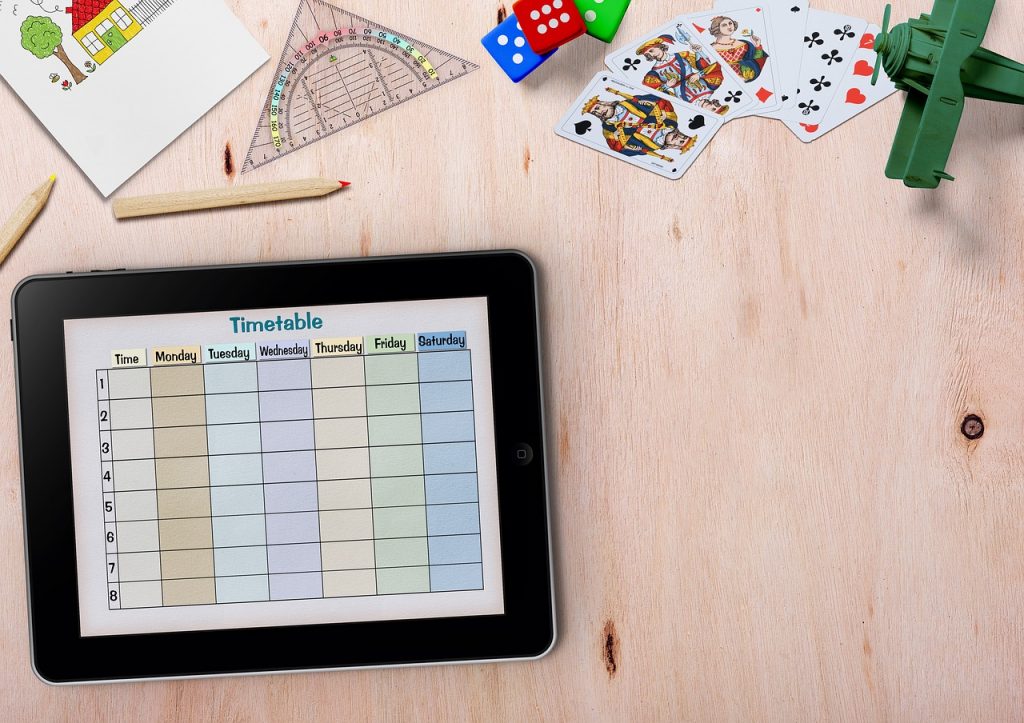A wise teacher once gave his students this riddle, “Until I am measured, I am not known, yet how you miss me, when I have flown.” Do you know the answer to it? In case you haven’t guessed, the answer to the riddle is time. Whether you’re wasting it or spending it, time is a unique phenomenon, and the most persistent element of our being. Time will not wait for you, so you need to make the most out of the time we have in this world. You can do this with proper time management.
Sadly, many people don’t understand the value of time. If you really believe that time is the most important element we are given, you will make the most out of your 24-hours, days, minutes given to you. You will know how to practice time management. Really, time management is all about choices, it is a game of choices, you pick what project to pursue, task to complete, and then you assign specific time slots based on their importance. In this article, we will introduce an effective time management tool, the Pomodoro technique timer, proven to increase productivity for its users.

Image from Adobe Stock
Benefits Of Effective Time Management
The benefits of time management done right are huge. Not only can it help you do better with your life, but it can also influence how you relate to others, how you relate to your well-being, and more. When you know how to manage your time, you are more productive. You don’t do more than what you did before, you do more of what’s important. You know how to prioritize—what should be done immediately, what can be scheduled tomorrow, etc.
Most parents want to teach their kids important habits like good hygiene, communicating with others, money management, etc, and there is nothing wrong with that, but the young ones won’t be able to master any of those skills if they don’t know how to manage their time. Need more proof? Did you know that based on various university studies, self-discipline, which happens to be a cornerstone of time management, is a better predictor of a teenager’s academic performance than IQ?
So if you are planning to send your kids to good schools like the United Day School in Laredo, Texas, you should teach your kids basic time-management skills as early as you can. Here are a few tips we’ve thought of to help you accomplish that feat.
Teach Kids To Measure Time
Give your kids a schedule, by doing this you will give them a good sense of how long things take. When making the schedule, break the afternoon and evening hours into 15 or 25-minute intervals. Each time slot is followed by three columns—what the kids plan to do, what they did, followed by a short reflection. The reflection part should not be forgotten, reassessing with the kids how they’re spending their time gives them the chance to adjust their schedule accordingly.
Time Management Tools

Image from Adobe Stock
Pomodoro Timer
Consider using time management tools like the Word Count Tool’s Pomodoro Timer as well. The Pomodoro Timer is a time management technique developed by Francesco Cirillo in the 1980s. It was created to increase an individual’s productivity, and it is very effective. In fact, many time management apps in the market apply this popular technique.
So, how does the Pomodoro technique work? Put simply, it breaks up your day into 25-minute focus sessions followed by five-minute breaks. According to Cirillo, 25 minutes is the maximum time your brain can focus on one thing. Once you get past that amount of time, your brain will eventually lose focus, and before you know it, you or your kids will be distracted. Well-known schools around the world like the Saint Ursula’s Convent School in the United Kingdom, for instance, teach techniques similar to the Pomodoro technique, too.
Going back to the Pomodoro timer, what happens if you do get distracted and it is not your fault? If at any time within the day your workflow is interrupted, you have to end the Pomodoro count there and start a new session later. If you can postpone the distraction until the Pomodoro count is over, so much the better.
Pomodoro Timer App
Word Count Tool’s Pomodoro Timer comes with three different timers. The first is the Pomodoro Timer app, made up of 25-minute cycles with 5-minute breaks in between. Each 25-minute cycle is known as one “Pomodoro”. After the fourth “Pomodoro”, there will be a long 15-minute break. If you have kids, they can use the Pomodoro Timer during their time for learning to manage their schoolwork.
For example, they need to finish the homework for this one subject, without distractions, before moving on to another subject. Or if your children are studying for tests, and they have tests in three subjects the next day, they can use the Pomodoro Timer to make sure they devote enough time to each subject.
Custom Timer
The second timer you will see in the Word Count Tool is the custom timer. Here, you can decide the length of each time period. Choose the hours, minutes, or even seconds. Simply type in the digits duration using the “+” and “-” keys on each side of the timer, and you are good to go! This will help your kids stay focused and on track. For instance, you can give your kids a chore list, or a chore chart with a corresponding time frame. Making comprehensive lists or charts detailing all of your child’s responsibilities, from taking out the trash in the evening, to sweeping the floor, is a great way to teach them how to be accountable for their actions.
As an example, you can include in the list, make your bed for 15 minutes, from 7 am to 7:15 am. To make sure they don’t go above the given time frame, you can time each task with the custom timer. Do your kids hate chores? Is it a battle to get them to do anything around the house? To get young kids into the habit of assisting with chores, try figuring out which ones they love to do.
Are they into gadgets? Then maybe they can use tools or gadgets to slice tomatoes in the kitchen, or mash potatoes. Do they have a green thumb? Then they can help weed the garden! If they like organizing things, they can pair up clean socks or sort silverware from the dishwasher.
As your kids get older, they can take on tougher tasks—chores that might not be fun but provide a certain level of satisfaction, like folding the laundry, vacuuming the carpet, feeding and brushing pets, etc. When the children see the tangible evidence of their efforts, they will be inspired to do more.
One-Time Timer
The third and last timer is a one-time timer—to use it, you just input the duration you want, the exact number of hours, minutes, and seconds. This is the best timer to use if you need your child to do something that isn’t in your normal routine, like help their little brother or sister with their homework while they work on their own homework.
Teach Time Management In A Fun Way

Image from Adobe Stock
Don’t Bombard Kids With Activities
One of the most common errors we make as parents is that we want to make sure our children get involved in any and every activity after school. This might lead to over-programming, and in the long run, will definitely not be good for your kids.
No one likes to be overworked. They will get burned out and unmotivated to do anything, even schoolwork. Instead of learning about time management the right way, all they will feel is a constant “go, go, go,” that will leave them craving or a few minutes of downtime every single day.
When you feel like you need to fit as much as humanly possible tasks into one day, you are not managing your time well. You are running after time, when you should make time work for you. You don’t want that to happen to your kids!
Carve Out Some Free Time
Making a schedule and sticking to it is important. As you make one, don’t forget to plot in a few minutes or hours of free time. Make time for kids to be kids, kids need to go out, release their energy, have fun at the playground, and enjoy their youth!
Solo playtime can be enjoyable and unstructured, but it can also help kids to realize that time management isn’t just about the serious stuff, it isn’t just about getting ready to go somewhere, or completing a structured task on time. It’s possible to have fun and manage your time at the same time. When you practice good time management, you have time to do what you want, you have time for school, family, work, and play.
Reward Your Kids
Feel free to reward your kids for managing their time effectively, those perks can serve as great motivators. Rewards can be daily, weekly, or monthly, what to give as a reward should be agreed upon as a family. Be as creative and imaginative with your rewards, you can give your kids time to play a video game as a reward, or make it a family award, to strengthen family bonds.
A week of successfully following a study schedule could be equivalent to a day at a video game arcade. Younger children can get rewards based on shorter time periods, such as having their favorite piece of candy after strictly following their daily routine for three days straight.
Make Time Management Fun
As parents, it is our duty to help our kids understand the value of time. Knowing how kids are, that is easier said than done. Kids, by nature, are impulsive and will do what they want. In order to get their attention, parents should make learning time management fun for kids. Here are some quick and easy ways – use crayons to color your calendars, or add stickers to mark special days.
Why not turn things into a game? Make it a game to see who can complete tasks around the house that usually take a lot of time like toothbrushing, putting shoes on, getting bags ready for school, etc. The more fun you make time management for your kids, the easier it will be to get them to understand the importance of time and how to handle it all the time.
Stay Focused On The Task At Hand
When your kids are on their best behavior, when they want to spend more time studying even if the schedule calls for them to start getting ready for bed at 7 pm, it might tempt you to give them a few more minutes of playtime. If your kids are beginning to learn about time management, you must not give in.
When time is up, move on to what’s next on the agenda, no matter how interested they are in that current task. Going beyond the allotted time, even for just a few minutes, can throw kids off. Keep up with your schedule, especially in the early days and weeks of learning about time management.
Teach Them To Prioritize
Teaching kids to prioritize their tasks is important if they are to learn how to manage their time. Prioritizing means giving greater importance and urgency to a certain activity, putting that thing, or that event, or that person, at the front of your to-do list, and pushing all the others out of the way. Prioritizing involves focusing on tasks, listening to people, and organizing events, skills which will be especially important in adulthood, but not less valuable in childhood or adolescence.
Start by helping your kids prioritize what to do in a day. Use the popular first, second, and last technique—let your kids decide what comes first in their day, like brushing their teeth, what comes next, like getting their school books ready in the morning, and so on and so forth until they choose what’s to come last in the day, like preparing their clothes for school.
Once they learn how to prioritize, they’ll be able to use that skill for the rest of their lives. If it takes a while for your children to put these concepts into practice, don’t give up. Start with small daily goals, before shifting to weekly and monthly priorities. Before you know it, you will have kids who are masters in time management!
Come Up With A Family Calendar
Teach your kids to respect other people’s time. What better place to begin this than at home? Create a family calendar. Involve your kids and partner in the entire process. Family calendars will keep everyone track, one look and you will know if your son has basketball practice on a Tuesday, choir practice on a Friday, etc.
Don’t forget to make it fun- for everyone! Banner paper is ideal for family calendars, since it can be colored, written, or painted on. Make it a family art session so that everyone can remember who has what on which days. Color code the calendar to avoid confusion. This simple practice will help your kids see days at a time in one place, this practice will help them understand the importance of being on time, of keeping your family on schedule all the time.
Make Calendars For Each Family Member
In addition to having a family calendar, each child should have his or her own calendar. This calendar will focus on his personal needs. He or she can keep the calendar in his room or her room. Break this calendar down by tasks per day, per week, or per month. Encourage your kids to add new tasks and to remove completed ones. This can be everything from what it takes to get ready for the science fair, to which topics he’ll need to focus on for midterms.
Use Fun, Child-Friendly Time Management Tools
In teaching time management to your kids, remember to use visuals and strategies that appeal to them. From there you will be able to determine what fits best for each of your child’s learning styles. Apps will definitely appeal to kids who love technology, while magnetic calendars will allow your kids to express their creative side, they can visually pin and schedule their days with the use of cute and colorful magnets that go with the magnetic calendar.
Final Thoughts On Time Management
Ask any parent what the biggest responsibility is when it comes to raising independent, well-rounded children, and you’ll hear the same thing again and again: teaching them the skills they need to succeed. And we’re not just talking about how to cook or ride a bike, we’re referring to the skills every kid needs to make it in this world—time management.
Thanks to the wonders of technology, teaching kids time management skills isn’t that difficult anymore. There are many apps, websites, and tools to help with each and every task. If you don’t have a time management program for your kids, there’s no better time than now to begin one. Your time is our greatest resource and when used wisely, it can help give you a wonderful, accomplished life. Who wouldn’t want that for their kids?

